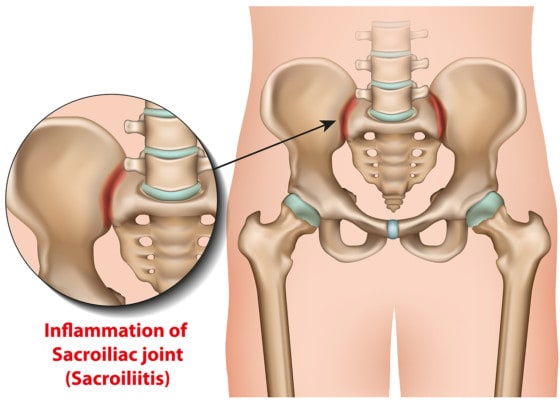SI Joint Pain after Low Back Fusion

Medicalstocks/Shutterstock
Low back fusions are a big problem. While a few patients who get their back fused really need the procedure to control serious instability, most patients get their back fused to help control pain. Recent controversies surrounding things like BMP drugs to promote fusion (which cause sterility in men), the fact that we American doctors fuse far too many low backs, and the low back fusion surgery complications all make the topic important if you’re considering spinal fusion surgery. For those patients who decide on a low back fusion because of pain, a recent study demonstrated that in many patients, the SI joint is being made painful by fusing the low back. Why? Your back bones are built to move. When one of them is artificially stopped from normal motion by fusion, the adjacent levels get overloaded, leading these levels to become degenerated at a faster pace. In one study, 16.5% of the patients who had their low back fused at 5 years and about 1/3 of patients at 10 years needed additional surgery to correct spinal degeneration caused by the fusion.The SI joint study above demonstrated the same phenomenon, but with the next joint down from the lumbar spine, which is the SI joint. This post surgery low back fusion SI joint pain has become so a common in our practice that it’s almost automatic that someone who has had their low back fused and who is experiencing pain in the back of the hip will undergo an interventional pain (read injection) work-up for SI joint syndrome. Just this last week I saw an unfortunate patient who had a 5 level low back fusion and ended up with more pain than before the fusion, this time above and below the fusion. The upshot? If there’s another way to manage your low back pain, don’t get your low back fused! Artificially stopping normal motion has unintended consequences and complications.

If you have questions or comments about this blog post, please email us at [email protected]
NOTE: This blog post provides general information to help the reader better understand regenerative medicine, musculoskeletal health, and related subjects. All content provided in this blog, website, or any linked materials, including text, graphics, images, patient profiles, outcomes, and information, are not intended and should not be considered or used as a substitute for medical advice, diagnosis, or treatment. Please always consult with a professional and certified healthcare provider to discuss if a treatment is right for you.